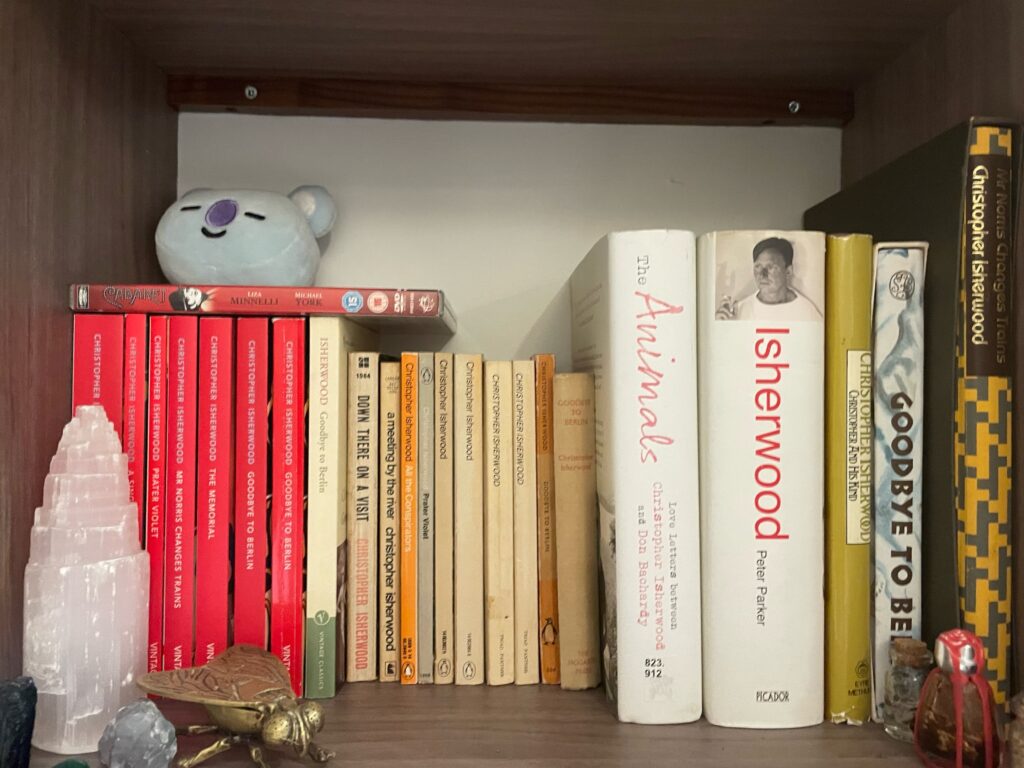6th November 2023
Listen
Listen

In a period of time when the LGBT experience was a quiet and subtle movement. There were few people who spoke up. From our own surrounding area, Christopher Isherwood was one of these brave people. The Anglo-American novelist was at the heart of the Gay Liberation Movement. This was after the publication of his autobiography ‘Christopher and his kind’ (1976) which spoke openly of his gay escapades in 1930’s Berlin.
Throughout his career in writing he has uplifted queer voices. E.M Forster (Known for his queer novel Maurice (1971)) had planned to keep the queer classic under wraps. Until Isherwood encouraged and painstakingly worked to get the book published after Forster’s death.
During LGBT+ History Month I think its important to recognise Christopher Isherwood legacy as a fighter for gay rights and a writer of our stories.
Gay icon Christopher Isherwood was born on 26th August 1904, in Wyberslegh Hall, on the outskirts of Greater Manchester.
Despite living a privileged upper-class life as the son of Frank Isherwood, a soldier who died in WWI and Kathleen Isherwood, the only daughter of a successful wine merchant, Christopher Isherwood felt as though England was not his home.
As a second-year student at Cambridge, he wrote dirty jokes and limericks on his final exams. This resulted in him being asked to leave. With little direction in life, he tried many paths. This even included a brief stint in medical school, to no avail.
Luckily, this lack of direction had not quelled Isherwood’s need for rebellion – he had amassed a group of friends full of poets, playwrights, queers and communists to his mother’s dismay. W.H. Auden, Stephen Spender and Edward Upward were the closest companions of Isherwood and the group often collaborated on plays, poems and even travel correspondence.
In 1929, Isherwood ventured out to Berlin because “to Christopher, Berlin meant boys.” In the 1920s, Berlin was the capital of all things queer. There were leaping advancements in the ideology of being homosexual and transgender.
The Jewish, polyamorous and gay man Magnus Hirschfeld must be thanked for this progressive state of affairs. He was widely responsible for the humanisation of queer people and pioneered the opening of the world’s first sexology research centre, the institute for sexual sciences. For a short time, Isherwood became a key figure amongst the frequent crowds of the institute. He also inhabited a flat nearby for some time.
Berlin became Isherwood’s home. By 1932, he had found love in a young, working-class man Heinz Neddermeyer. The couple lived in Berlin until 1933. In a bid to escape the rise of Hitler, the pair travelled Europe and North Africa together. Neddermeyer even faced expulsion from the UK, due to his German heritage and lack of stable work. Upon realising that the fight for a visa was futile, the two parted ways.
Heinz Neddermeyer was arrested by the Gestapo in May of 1937. Upon Isherwood’s own request, Heinz placed complete blame on him for his crimes of homosexuality and colluding with a number of anti-Nazis and communists. He was sentenced to three and a half years of forced labour and military service. Luckily, he survived the war and went on to marry. He even named his son Christoph.
On account of his Pacifist nature, Isherwood was opposed to the war. He moved to California to avoid active duty, offering instead to do work in propaganda. Isherwood settled down, finding spirituality in the work of Swami Prabhavananda. Whilst never taking Monastic Vows – he remained a devout Buddhist for the rest of his life.
On Valentine’s day 1952, 40-year-old Christopher Isherwood met 18-year-old Don Bachardy. The young painter and himself remained together until Isherwood’s death in 1986 and were extremely smitten with one another.
The most important part of Christopher Isherwood’s legacy, however, is his novels, which are iconic and a pinnacle of the queer experience. They paint a story of his own life through a series of semi-autobiographical novels – his friends and acquaintances censored in name and his own likeness posed as a literary device. A mere spectator to his own life, for readers to peer through.
His life in Berlin was the backdrop of his most famous novel “Goodbye to Berlin” (1939) which posed as the inspiration for the musical ‘Cabaret’ (with Liza Minelli playing a key role). A haunting exploration of Weimar Germany and the rise of Hitler; the free and queer Germany plays a vital role in the novel, yet is often overlooked by both the musical and its film adaptation.
Isherwood’s works remain the purest and most undiluted vision of Germany at the time. Whilst he most often left his vessel in the novels asexual, his works still capture the queer experience. In later novels, like ‘A Single Man’ (1964), he paints a portrait of a man in grief after losing his partner in a car accident. A figment of Isherwood’s imagination trying to imagine life without his very own, Don Bachardy.

I have amassed quite a collection of the works of Christopher Isherwood. The most special part of this collection is my very own copy of “Goodbye to Berlin” from 1940 (Pictured between “The Animals” and my 1958 copy of “Goodbye to Berlin”). This book holds a very special place in my heart.
In hard times, it takes only a glance to my bookshelf to be reminded of all the small joys in life. The characters are love letters to real people that once lived and breathed. They are flawed, real and immortalised by Christopher Isherwood out of love. He takes great notice of his surroundings – the private and intimate lives of strangers, the places he lived and worked in and the small habits of old friends that would’ve been forgotten. In particular, he truly captured every room he stepped in.
Christopher Isherwood died in 1986 of prostate cancer, yet he will live on forever. Through his written works, his love for Don Bachardy and his art, and his flawed yet human self. So long as people continue to find his novels, Isherwood’s legacy as a gay icon lives on.
For more on LGBT+ History Month: LGBT+ History Month: What is it and how are we Celebrating?